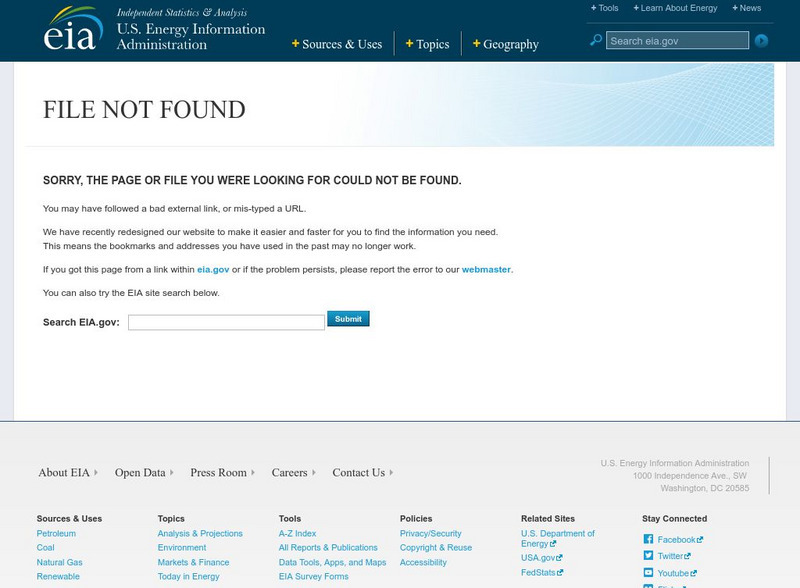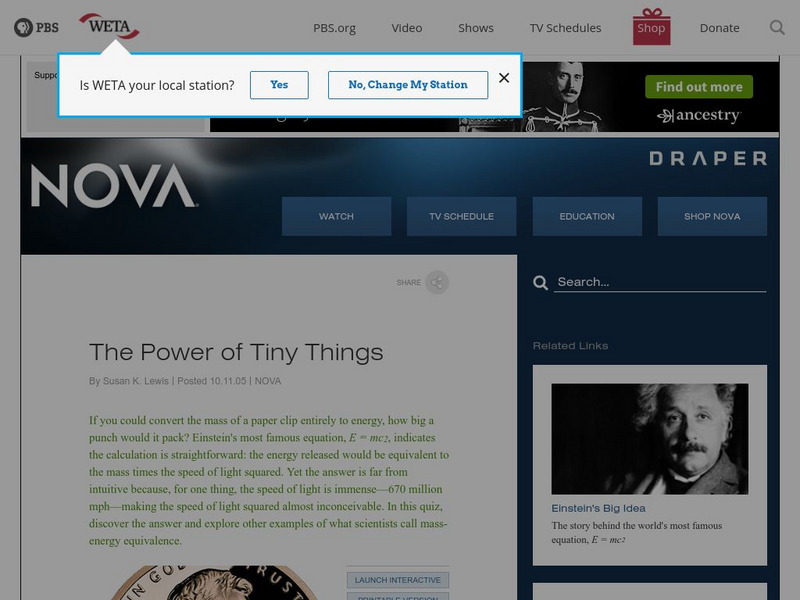Center Science Education
CO2: How Much Do You Spew?
Split your earth science or environmental studies class into groups and give each a scenario card. Scenario cards describe the lifestyles of 10 different fictitious families, focusing on their energy usage. Carbon dioxide emissions are...
Curated OER
Why is it so hot when I sit next to the window?
Students investigate how energy travels through glass. In this energy usage lesson, students conduct an experiment in which they decide if window film affects how much energy travels through the glass. Students use a journal to make...
Curated OER
The Math of Light
Investigate light intensity, illuminance, and power consumption of different light source.Compare the efficiency of light bulbs then create a persuasive advertisement about it.
US Energy Information Administration
Energy Information Administration: The 1973 Oil Embargo
The Energy Information Administration provides a short summary of the energy crisis of 1973 and a slide show with charts of oil and energy prices, production, and usage since the crisis.
US Department of Energy
United States Department of Energy: Power Metering Project
Two part lesson focuses on applying analytic tools such as pie charts and bar graphs to gain a better understanding of practical energy use issues. Students will learn how different types of data collected affect the outcome of...
PBS
Pbs Nova: The Power of Tiny Things
Have you ever wondered what would happen if you converted the mass of a paper clip into an amount of energy? In this informative quiz, discover the answer, and explore other examples of mass-energy equivalence.
American Geosciences Institute
American Geosciences Institute: Earth Science Week: Know Your Energy Costs
The goal of this activity is to become aware of how much energy students use at school- and the financial and environmental costs.
Energy4Me
Energy4me: Sustainability
Find out how sustainability plays a role in the goal of global energy efficiency.
PBS
Nova: The Big Energy Gamble
Students conduct an energy audit to determine how much carbon dioxide their family is producing, and then make recommendations for lowering their family's carbon footprint.










